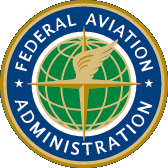 Regular readers know that I can get a little feisty when it comes to the topic of “regulatory capture,” which occurs when special interests co-opt policymakers or political bodies (regulatory agencies, in particular) to further their own ends. As I noted in my big compendium, “Regulatory Capture: What the Experts Have Found“:
Regular readers know that I can get a little feisty when it comes to the topic of “regulatory capture,” which occurs when special interests co-opt policymakers or political bodies (regulatory agencies, in particular) to further their own ends. As I noted in my big compendium, “Regulatory Capture: What the Experts Have Found“:
While capture theory cannot explain all regulatory policies or developments, it does provide an explanation for the actions of political actors with dismaying regularity. Because regulatory capture theory conflicts mightily with romanticized notions of “independent” regulatory agencies or “scientific” bureaucracy, it often evokes a visceral reaction and a fair bit of denialism.
Indeed, the more I highlight the problem of regulatory capture and offer concrete examples of it in practice, the more push-back I get from true believers in the idea of “independent” agencies. Even if I can get them to admit that history offers countless examples of capture in action, and that a huge number of scholars of all persuasions have documented this problem, they will continue to persist that, WE CAN DO BETTER! and that it is just a matter of having THE RIGHT PEOPLE! who will TRY HARDER!
Well, maybe. But I am a realist and a believer in historical evidence. And the evidence shows, again and again, that when Congress (a) delegates broad, ambiguous authority to regulatory agencies, (b) exercises very limited oversight over that agency, and then, worse yet, (c) allows that agency’s budget to grow without any meaningful constraint, then the situation is ripe for abuse. Specifically, where unchecked power exists, interests will look to exploit it for their own ends.
In any event, all I can do is to continue to document the problem of regulatory capture in action and try to bring it to the attention of pundits and policymakers in the hope that we can start the push for real agency oversight and reform. Today’s case in point comes from a field I have been covering here a lot over the past year: commercial drone innovation.
Yesterday, via his Twitter account, Wall Street Journal reporter Christopher Mims brought this doozy of an example of regulatory capture to my attention, which involves Federal Aviation Administration officials going to bat for the pilots who frequently lobby the agency and want commercial drone innovations constrained. Here’s how Jack Nicas begins the WSJ piece that Mims brought to my attention:
In an unfolding battle over U.S. skies, it’s man versus drone. Aerial surveyors, photographers and moviemaking pilots are increasingly losing business to robots that often can do their jobs faster, cheaper and better. That competition, paired with concerns about midair collisions with drones, has made commercial pilots some of the fiercest opponents to unmanned aircraft. And now these aviators are fighting back, lobbying regulators for strict rules for the devices and reporting unauthorized drone users to authorities. Jim Williams, head of the Federal Aviation Administration’s unmanned-aircraft office, said many FAA investigations into commercial-drone flights begin with tips from manned-aircraft pilots who compete with those drones. “They’ll let us know that, ’Hey, I’m losing all my business to these guys. They’re not approved. Go investigate,’” Mr. Williams said at a drone conference last year. “We will investigate those.”
Well, that pretty much says it all. If you’re losing business because an innovative new technology or pesky new entrant has the audacity to come onto your turf and compete, well then, just come on down to your friendly neighborhood regulator and get yourself a double serving of tasty industry protectionism!
And so the myth of “agency independence” continues, and perhaps it will never die. It reminds me of a line from those rock-and-roll sages in Guns N’ Roses: ” I’ve worked too hard for my illusions just to throw them all away!”

 The Technology Liberation Front is the tech policy blog dedicated to keeping politicians' hands off the 'net and everything else related to technology.
The Technology Liberation Front is the tech policy blog dedicated to keeping politicians' hands off the 'net and everything else related to technology.